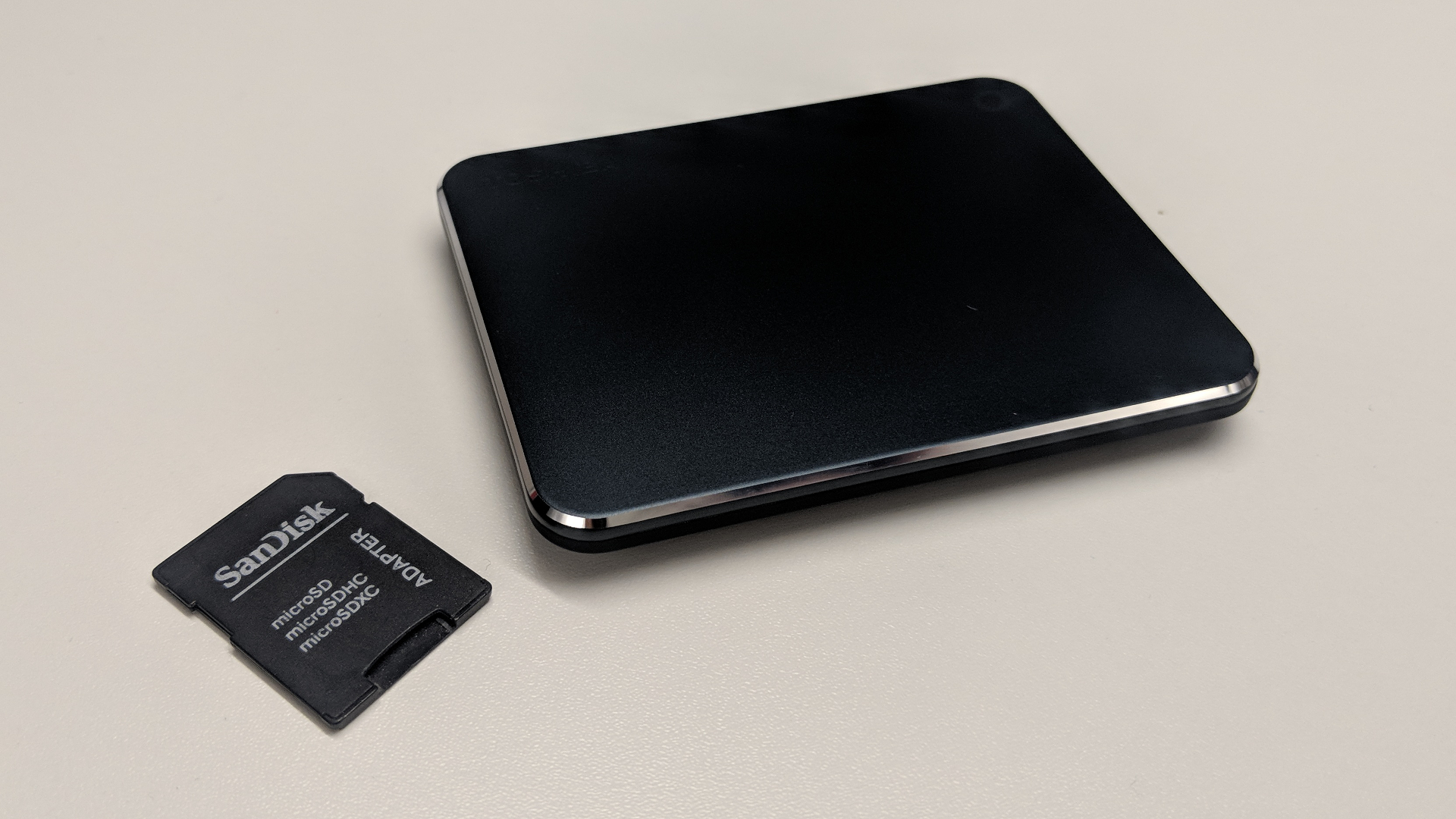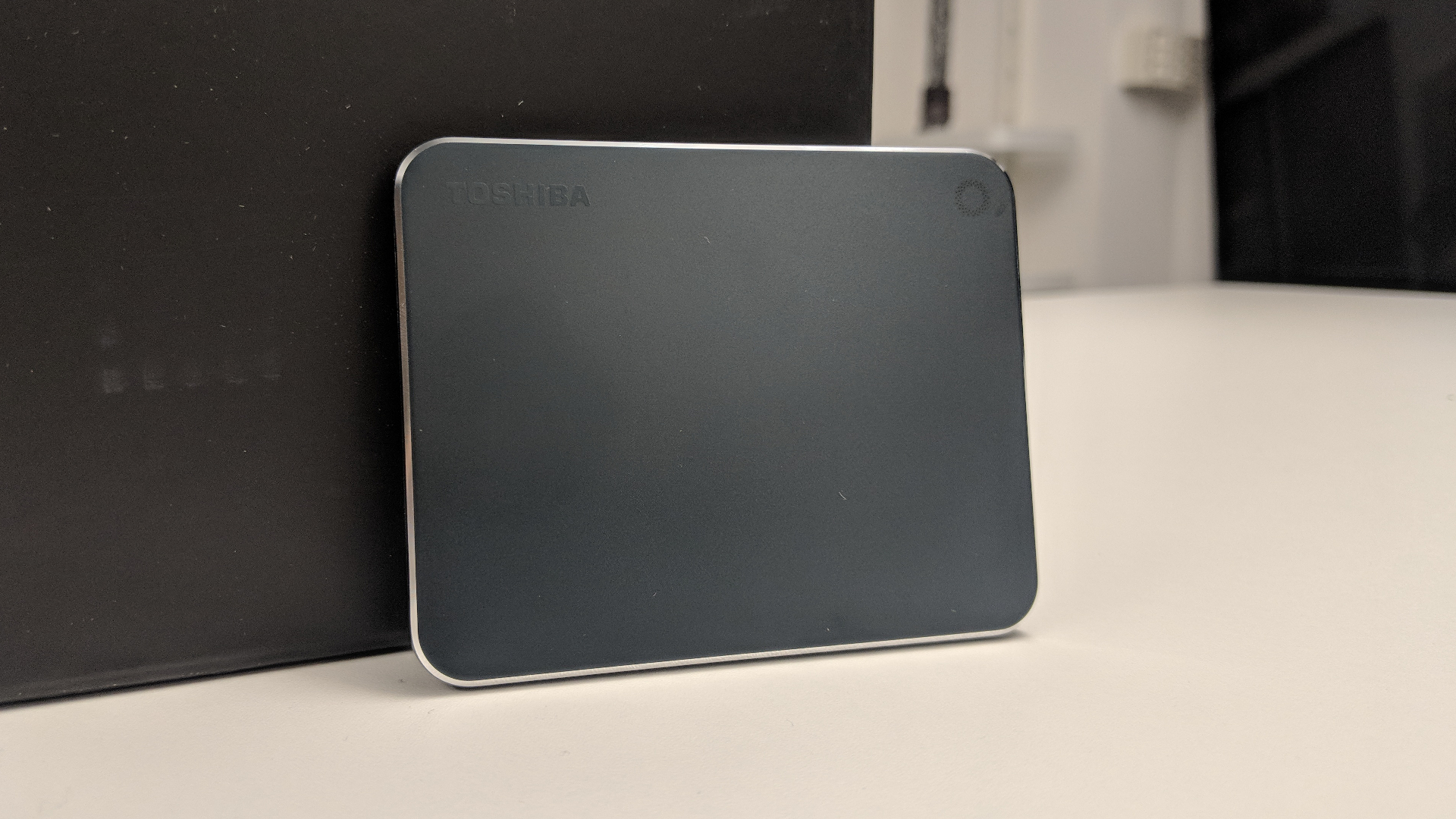TechRadar Verdict
The Toshiba XS700 is an average drive at best. There are other external SSDs that are cheaper and boast higher performance levels.
Pros
- +
Type-C connector and adaptor
- +
Useful SSD software bundle
- +
Three-year warranty
Cons
- -
More expensive than the competition
- -
Bulkier than rivals as well
Why you can trust TechRadar
The external drive market is divided into two camps: on one side, there are those who want the cheapest possible storage and usually opt for hard drives with a metal platter (spinning rust as some call it), while others go for solid-state drives (SSDs) that offer an optimal balance between cost, size and performance, with storage capacity taking a back seat.
With that in mind, Toshiba has introduced a new external SSD, the XS700, which has a capacity of 240GB and uses Toshiba’s 64-layer BiCS flash technology as well as a USB 3.1 Gen 2 interface. Only one model of this drive is currently available but expect bigger capacities, probably up to 2TB, to be released in the near future.
The Toshiba XS700 costs $94 (around £70) at Newegg in the US with no immediate availability in the UK and elsewhere.
Design
The drive is larger than expected at 95 x 75 x 11mm (with a weight of 90g). It has a lightweight aluminum frame with a rubber underbelly and an LED ring on the top/front surface, which lights up when it is connected to a powered-on host like a laptop.
Other than the subtle Toshiba wording and a sticker (you can peel off) that contains the usual bumph, there’s nothing particularly noteworthy about the XS700 (full model number: THN-XS70K2400G8).
There’s no protective flap for the USB Type-C connector. The drive is not IP68-certified but it does and should be less prone to damage from shocks, bumps and drops. Toshiba bundles a USB Type-A adaptor and a 45cm long USB cable as well.

Usage and performance
The drive, which was announced at CES 2018 earlier this year, should in theory also be accessible from a Type-C compatible smartphone, but we couldn’t get our Pixel 2 XL to read from it despite the status light of the XS700 glowing.
Sign up to the TechRadar Pro newsletter to get all the top news, opinion, features and guidance your business needs to succeed!
There’s no bundled software but you will get a comprehensive suite of utilities from Toshiba’s website bundled as an SSD management software pack; just ignore the OCZ branding. Note that some of the features (like SSD Tuner and OS Tuner) are only available for Windows. You will also be able to add password protection to the drive, should you wish.
Inside the drive is the NAND hardware that powers the RC100 and the TR200, two internal SSDs produced by Toshiba. The hardware is built using Toshiba’s third-generation BiCS flash memory (64-layers, 512GB density) and a vertically-stacked cell structure (hence the 3D moniker).
Toshiba is one of the very few vendors - alongside Samsung and SanDisk/Western Digital - to make NAND chips and sell them inside own-brand storage devices.
Here’s how the Toshiba XS700 performed in our benchmark tests:
CrystalDiskMark: 422.6 MBps (read); 412.9 MBps (write)
Atto: 458.3 MBps (read, 256mb); 460.6 MBps (write, 256mb)
The drive has a SATA controller which means that while it has a USB 3.1 Type-C connector, which is capable of hitting up to 10Gbps, its maximum speed is likely to be less than half this. Toshiba quoted 530MBps and 480Mbps (read/write speeds) which is about average.
In our real world testing, it clocked just over 229MBps when transferring a single 10GB file, which is significantly slower than the G-Technology GDrive, for example. It was also one of the slower drives when it came to CrystalDiskMark read and write speeds, hitting 422.6MBps and 412.9MBps respectively, which is within a few percent of G-Tech’s leaderboard-topping drive.
Using the Atto benchmark, we managed to reach up to 458.3MBps and 460.6MBps in read and write speeds – very decent numbers, albeit in synthetic tests.
The competition
There are not many affordable sub-500GB external drives around, and that, perhaps, indicates a market shift to higher capacities.
The cheapest model, and probably the one which will rival the XS700 most directly, is the Adata SD600 which is sold by Amazon (UK) for £66 (around $88).

The IP68 version of the latter, the SD700 which we tested recently, can be had for just over £69 (around $92), while the stylish WD My Passport SSD is a penny cheaper than £80 (around $107). Both provide an excellent alternative to the XS700, especially if you are looking for something a bit more solid.
However, note that Toshiba’s drive does come with a Type-C connector rather than a ‘flat’ style USB connector.
Final verdict
The XS700 is a decent drive – no more, no less. The third-generation BiCS flash technology brings nothing new to the table, and the performance compared to the competition can best be described as average. That said, this drive’s three-year warranty, bundled SSD software and USB Type-C connection are what saves it from being a completely anonymous external drive.
A fourth-generation QLC (quad-level chip) is expected in 2018 which will push the chip storage density to 1TB, and hopefully depress the unit price of SSD storage further.
- We’ve picked out the best portable drives for your PC or Mac

Désiré has been musing and writing about technology during a career spanning four decades. He dabbled in website builders and web hosting when DHTML and frames were in vogue and started narrating about the impact of technology on society just before the start of the Y2K hysteria at the turn of the last millennium.
